20+ SAMPLE Equipment Proposal
-
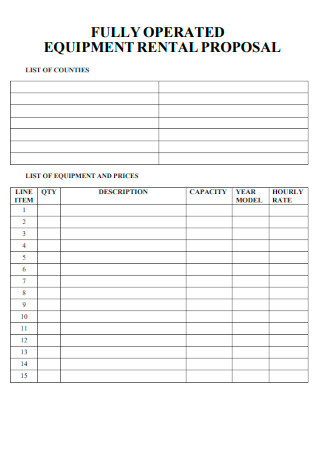
Fully Operated Equipment Rental Proposal
download now -
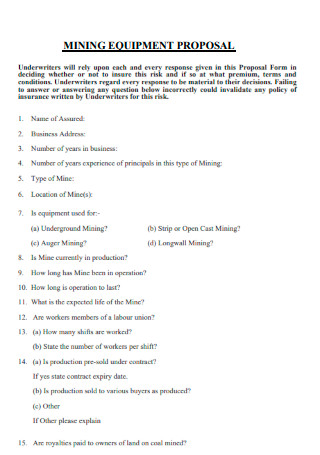
Mining Equipment Proposal
download now -
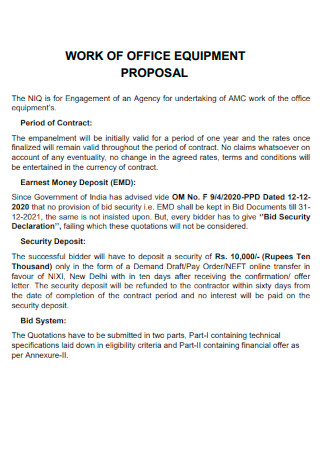
Work of Office Equipment Proposal
download now -

Conference Room Equipment Proposal
download now -

Equipment Lease Purchase Financing Proposal
download now -
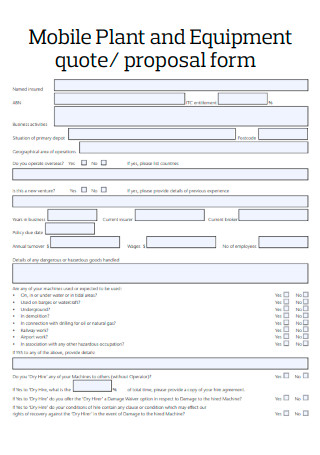
Mobile Plant and Equipment Quote & Proposal Form
download now -
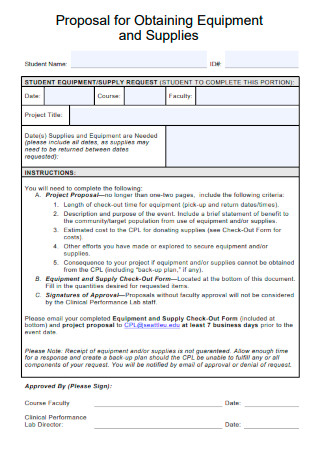
Proposal for Obtaining Equipment and Supplies
download now -
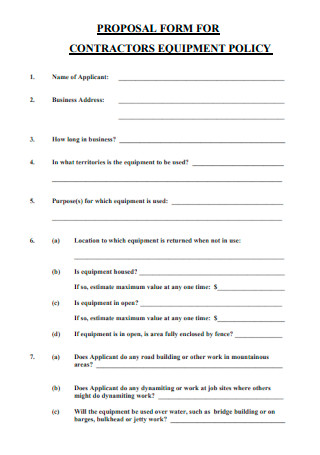
Proposal Form for Contractors Equipment Policy
download now -
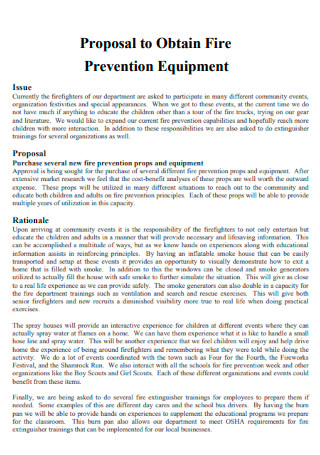
Proposal to Obtain Fire Prevention Equipment
download now -
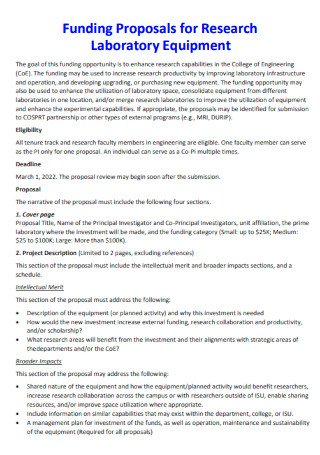
Funding Proposals for Research Laboratory Equipment
download now -

Inspection Equipment Proposal
download now -
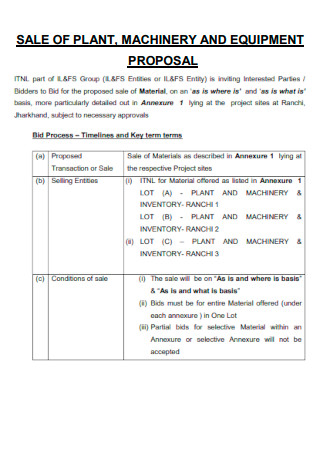
Sale of Palnt Machinery & Equipment Proposal
download now -
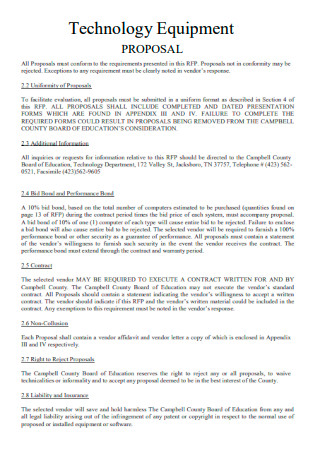
Technology Equipment Proposal
download now -
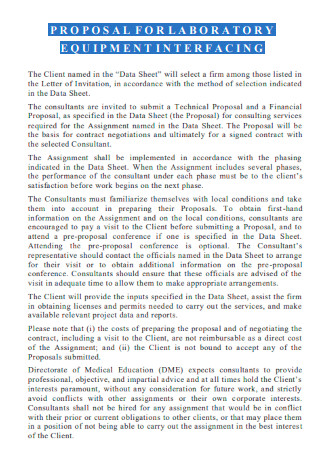
Proposal for Laboratory Equipment Interfacing
download now -
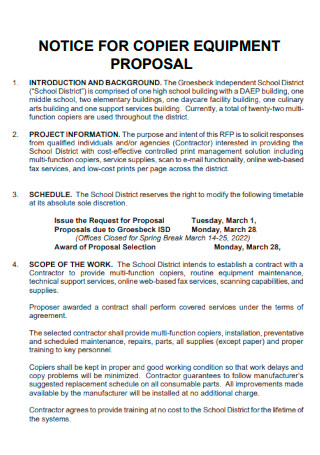
Notice for Copier Equipment Proposal
download now -
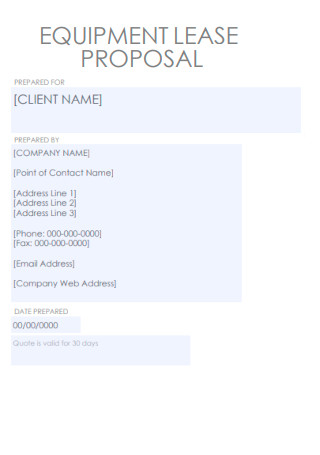
Equipment Lease Proposal
download now -
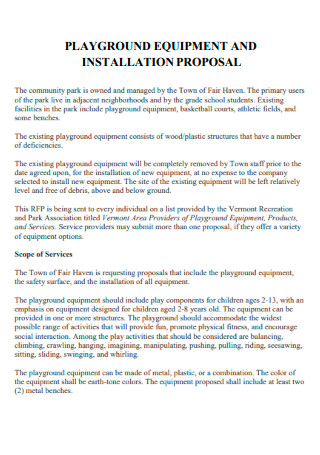
Playground Equipment & Installation Proposal
download now -
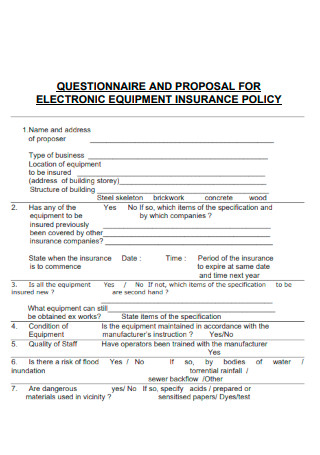
Questionnaire and Proposal for Electronic Equipment Insurance Policy
download now -
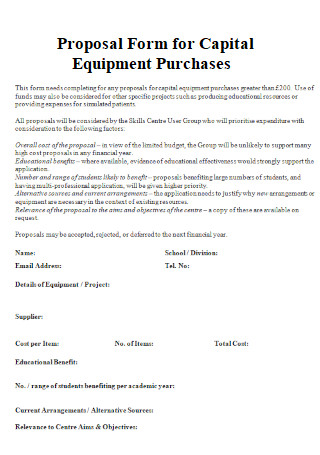
Proposal Form for Capital Equipment Purchases
download now -
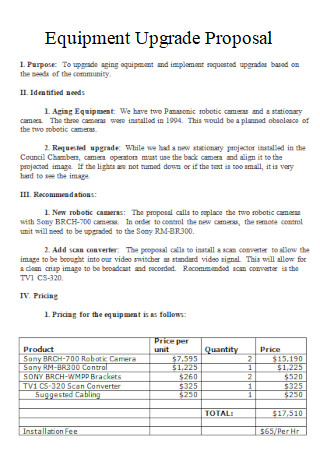
Equipment Upgrade Proposal
download now -
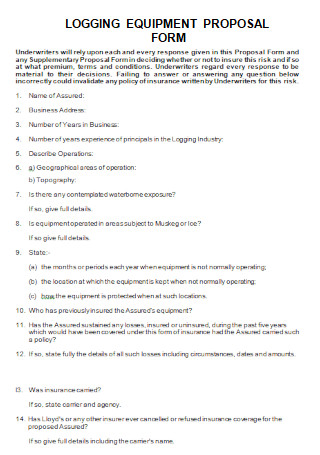
Logging Equipment Proposal Form
download now
FREE Equipment Proposal s to Download
20+ SAMPLE Equipment Proposal
What Is an Equipment Proposal?
Advantages of Purchasing Equipment
Benefits of Maintenance
How to Write an Equipment Proposal
FAQs
How often should equipment be calibrated?
How do you write a formal letter of request?
What is considered important office equipment?
What Is an Equipment Proposal?
An equipment proposal allows you to present your items to a possible buyer. It describes the equipment you are selling, its characteristics, how it fulfills the client’s demands, and the cost and other contractual specifics. It is important for the Customer to be persuaded in purchasing your offer. Like for an office equipment proposal, employees may be in need of a new fax machine or a new printer to have an easier process of obtaining hard copies of documents. To have a better understanding of the format, you can view the equipment proposal sample available on this site.
Advantages of Purchasing Equipment
There are notable differences between renting or purchasing a piece of new equipment outright. Renting allows you to select certain things for the period of time you require them. If you intend to utilize the equipment for an extended length of time and on several projects in a succession, you should either Lease or purchase it. In this curated list, points will be given so you can go through the benefits and drawbacks of leasing versus purchasing equipment to help you make smarter buying against leasing choices. Even if you have to take out a loan to purchase new equipment, it may be worthwhile.
Benefits of Maintenance
Preventative equipment maintenance is critical to increasing the life of your equipment and eventually saving you time and money. While you may believe that paying for preventative maintenance is wasteful, the fact is that without it, you are frequently forced to make more costly repairs. This is why this article strongly urges companies to believe in the value of preventative maintenance, and after reading the following reasons, you will be prompted to prepare a preventive maintenance proposal in addition to an equipment proposal.
How to Write an Equipment Proposal
Both curated lists give you or your clients an idea of the advantages of purchasing a new or lightly used equipment while also ensuring there is proper maintenance received for these Tools, it is finally time for you to proceed to the process of preparing a new equipment proposal. As stated, some businesses will require you to compose a proposal for new equipment and will often provide you with an equipment proposal template to use. If this is not the case at your company, there are a few items you should include in your equipment proposal. Continue reading below to start the document from scratch.
1. Parties Involved
To start off the document, you will need to identify who are the parties involved in the potential transaction. Ensure that you are able to correctly write the names, company, building address, and even updated contact information as part of the equipment proposal. This will help readers to identify who are the ones engaging in the exchange. You can even label yourself as the equipment provider or manufacturer. Additionally, if the space allows it, you should incorporate the official logos used by both parties as it will help distinguish the presence of the organizations within the document.
2. Description and Usage of the Equipment
As for the next step, you will need to give a detailed description of the equipment that will be purchased to the client. Despite it being a popular type of equipment or machinery or even one identified by the client, it is still important that you include the full explanation of the particular equipment. Following after would be the full intended usage of the equipment. This will help clients not use any misunderstandings against you or your company. If you are including more than one type of equipment, then create an itemized list with the specific model and quantities for each.
3. Benefits of Obtaining the Equipment
Not everyone will be fully convinced about going through with the transaction. This section is placed to lay out the gains that the client can gain from purchasing the equipment. As has been listed above, you can enumerate additional points to further persuade your client into sealing the deal. Additionally, you can include any possible cost savings and return on investment to the client’s company.
4. Maintenance of the Equipment
In a point made in the earlier curated list, maintenance should never be forgotten once obtaining a new type of equipment especially if it will be constantly used within the client’s company. If your company offers the service to do preventive maintenance, you can also include a section and place it there. Otherwise, if the client is not open to outside personnel handling after the purchase, then you can give a piece of advice or indicate the best possible department to handle the responsibility of overseeing the maintenance of the equipment.
5. Timeline of the Installation
As for the last step of the equipment proposal, it will require you to create a Timesheet on the time it takes for the installation to complete. This will assure the client upon the completion date, so they can either pursue a project on a specific date or continue working on something that has been paused due to a lack of necessary items. You can also provide the reason as to why the installation may take a longer estimated time to complete.
FAQs
How often should equipment be calibrated?
If you perform critical measurements on a regular basis, such as monthly, quarterly, or semi-annually, a shorter time span between calibrations will result in fewer questionable test results. Calibration at shorter intervals will often result in better specifications. Calibration is essential regardless of the type of tester, how frequently it has been used that year or other factors. Make sure to keep track through an Equipment Calibration Logs. This goes without saying that both types of equipment calibrating and equipment maintenance are important to ensure the safety and effectiveness of all used equipment within the company.
How do you write a formal letter of request?
Producing a request letter for tools and equipment may appear to be a difficult task, but it does not have to be, especially if you use an equipment request proposal template. You must demonstrate to your employer why the existing Equipment is insufficient to meet your needs and provide a compelling reason for purchasing the equipment. Make sure you have done your homework on the equipment you want so you can ask for the specific products that will benefit you the most. If you don’t need to argue for a specific model of equipment, but rather a category of equipment.
What is considered important office equipment?
Office stationery is a basic daily necessity that every company should have. Pens, paper, notebooks, post-its, and other essential office supplies must be readily available for employees to work properly and effectively. In terms of technology or machine, copiers, fax machines, computers, and printers are commonly seen in offices.
An equipment rental proposal has a significant difference from an equipment purchase proposal letter which lies in the intentions and contents of the document. But despite that, the sections remain the same. More or less, you will be needing what has been stated in the guide above, which is why it is vital that you go over the steps before proceeding to write your equipment proposal, regardless if it is a sports equipment proposal or for another use.
